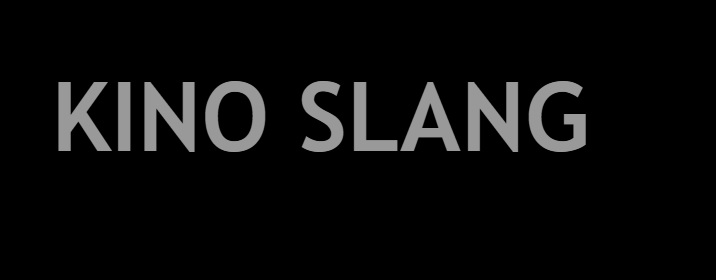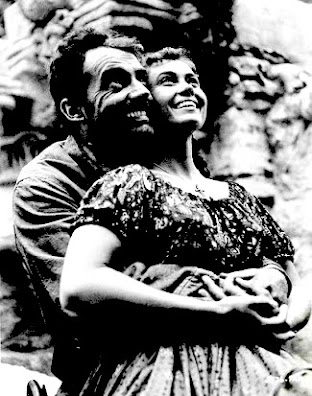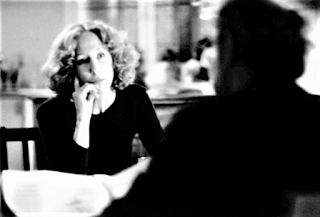Expensive Cement:
Vitalina Varela (Pedro Costa, 2019)
by Patrick Holzapfel
Ewigkeiten, über dich
hinweggestorben,
ein Brief berührt
deine noch un-
verletzten Finger,
die erglänzende Stirn
turnt herbei
und bettet sich in
Gerüche, Geräusche
(Paul Celan)
Eternities, died
over and above you,
a letter touches
your still un-
wounded fingers,
the shining forehead
vaults hither
and beds itself in
odors, noises.
Many great houses have been built throughout the history of cinema. From Buster Keaton and Eddie Cline’s One Week to Jean Renoir’s The Southerner, the founding of an existence has always been closely connected to the construction of a house. Yet, most of those buildings and lives have sooner or later been destroyed. In the films of Pedro Costa, tragedy finds a home in houses that do not exist. Houses of lava in which no one can live, fading dreams of a shared life, memories of a love. These dramaturgical bricks build up a melodrama in his work. A house has to be built, it has to be filled with life, with passion and tenderness to be a home. The roofs will be improved, hallways will be cleaned and the most beautiful doors will be inserted. One brings the curtains of the ancestors, another lights the first candle of the evening, still another brings some photographs and music. They sit at a table and eat shoulder to shoulder. It smells of beans that taste like home. Traces in the plaster walls tell of work and dedication. Yet always, something breaks. We can hear disquiet in the woodwork, during a storm bricks tumble off the rooftop. The people leave the houses and forget their dreams. Instead they are housed in impersonal flats, cooped up in tiny beds, and hit their heads on low ceilings. In front of windows we see bars, there is an unbearable noise all through the night. Cement is expensive, so is color. Nobody helps. Caterpillars approach and destroy the foundations. They tear everything down until it is better to forget than remember the warmth of a pillow or a kiss in the house of fire. However, like in the Lumière Brothers’ film that showed how to reverse the demolition of a wall, we find in the films of Pedro Costa a persistent belief in the ability of cinema to rebuild those houses, to renovate them, to paint them in new colors. Every film of this director resembles an attempt to build a house. Sometimes it must be done in order to forget another house, sometimes in order to be able to breathe, to survive. A house is needed for people to be able to speak, to confess, to understand, to love and to learn. There is a door on those houses. It’s not open but it exists. Everything that happens behind those doors also happens without the cinema. It’s only that Costa shows the people he films and we the audience that those doors exist. Thus building a house becomes the making of a film and entering a house becomes its experience. It’s only when both come together that we can live in a house and watch the world through its windows.


Vitalina Varela is set in a vacuum. A woman lives in a desolate room in different states of absence. One of those absences is that of Vitalina’s husband. His name is Joaquim, he died. Before he died, he ran away, he disappeared. Vitalina arrives in Lisbon after he died and she finds only the remains of a life never truly lived. She meets an unfinished, damaged house, with images of desire sloppily tacked to the wall and hears tired whispers in the alleys. Another absence is Cape Verde. Vitalina imagines or remembers a happy life together there. In two sublime flashbacks Costa breaks out of the narrow gullies of the Cova da Moura neighborhood into the light. In Vitalina’s longing for Cape Verde we can find the expression, as well as the impossible expedient, of Vitalina’s alienation. In the abyss of a faraway home, a language barely spoken anymore is written on the forgotten wind coming from the seething Pico do Fogo.
Astonishingly, the film also shows places that do not really exist, or when they do exist, they are invisible places (like the people living in them), the kind that cities turn away from, like a cameraman from a failed shot. We go down these streets, passing dark corners where suffering eyes look at us, we see wordless card players shrouded in darkness or a tunnel through which silent people stagger. Costa shows us many paths but they are not leading to concrete places. People emerge from the darkness, light touches them for a second, then they disappear again. Wide-angle shots show less the space than what the space has lost. We find lost neighbourhoods, forests disconnected from reality, tree trunks blocking the skyline, and a sustained darkness that recalls Degas’s statement: “Daylight is too simple.“ The sun is another absence. Everything is poised in the caution of the night.
The people get lost, search for each other and don’t find one another. In general, light protects in the films of Costa but in Vitalina Varela everybody thirsts for the little miracles of light, just a single beam of sunlight penetrating the land of gloom. Shortly after arriving at Joaquim’s house, Vitalina opens the door a tiny crack. Light touches her face, her eyes. She keeps her secrets and dignity against the darkness so masterfully captured by Costa and his cinematographer Leonardo Simões. Their black resembles some of Courbet’s best paintings, especially those in which he paints caves swallowing light. Observations of reality transform into images of the soul. Flickering candle light illuminates images of dead Joaquim. Another kind of light comes through the barred windows (an expression of imprisonment) and enables Vitalina to read a letter. Yet, even the letters, as Vitalina whispers, have all been thrown away. Between light and black, Costa shows life where nothing remains.
Parts of Vitalina Varela were shot in an unoccupied cinema rebuilt into a film studio. The metaphor almost imposes itself: a dead space of exhibition becomes a springboard for new work. Cinema (Light) is dead, long live the new light rescued from the obscurity of a ruin! Costa, a filmmaker who is not assumed to be a man of strong religious faith makes important rituals for Vitalina possible. A man comes into Joaquim’s room (for the house and what we see of it is not much more than that). He blows on the cinders of incense on a plate. Its smoke wafts through the building. Vitalina ties a white headscarf made of silk around her head to express her mourning. Later she wraps it around a cross standing on the nightstand and wears a black headscarf instead. Over a short time, she takes the steps of being a widow just as she descended the stairs of the airplane to arrive in Lisbon. In stressing the absences Costa creates anything but a paradox. He sticks close to a body that wants to abolish an absence. It’s the absence of a woman, an immigrant.
When Vitalina arrives she stands at the back exit of an airplane. She hears the strident breath of the machines, constant chirping which reminds us of heart beats. We meet Vitalina at an exit, she is the woman that will become the film. Costa has repeatedly talked about the importance of first scenes for a character. How to introduce, how to say farewell? Those two questions are at the core of the whole film, a film that brings us closer to somebody we meet on the way out, a film that brings her closer to saying goodbye to someone she lost long ago. Vitalina Varela is, among many other things, a film about bringing a relationship to a close, but the longer we follow Vitalina the more difficult and essential it becomes for the film itself to find closure. Vitalina must work with much more than just a deceased husband. She has to work with her rage over his abandonment, her frustration over his betraying their life together. Joaquim was a prowler, a stray dog, a man in a world of men. We never see him but we may imagine him as someone like Spencer Tracy in Frank Borzage’s Man’s Castle (1933), another film about building a home, only with a man who likes to sleep out in the open in order to look at the stars.
The gangway approaches, an entrance into a new, foreign, and cold world. Vitalina stands on this gangway for the rest of the film, her whole life becomes a gangway. It’s a film about a gangway, if you like. Each step takes her down but also up again. In navigation a gangway used to be a rope or a corded ladder. Maybe this says more about how insecure each step is between different worlds. In having Vitalina arrive in Lisbon barefoot and with drops of wetness on her feet, Costa emphasizes the act of transition. Indeed it’s as if Vitalina was coming out of the water. The film will never recover from these first steps. They are entry and exit, past and present at the same time.
Costa has always been a filmmaker of transitions. Be it in his exploration of artistic processes in his films about Danièle Huillet, Jean-Marie Straub and Jeanne Balibar, or in his multiple approaches to the people of the Cape Verde islands. For him cinema begins where we cannot make an easy image. It exists where fixed images deprive and we find change, initiation, or the ashes of a burned house. Speaking about his film Cavalo Dinheiro (2014), Costa said it was a film about forgetting. It was about exorcising the demons within the soul of his protagonist Ventura and himself. We can find similar elements in Vitalina Varela but its protagonist brings with her a prouder memory, a more hopeful lapse. Vitalina is a woman of fading dreams whereas the Ventura of Cavalo Dineiro is a man of nightmares. Costa referred to the two films as twins. Their respective final shots couldn’t differ more. In Cavalo Dinheiro it’s a brutal look through glass upon a collection of knives, in Vitalina Varela it’s the peaceful image of a silent past where a house is being built. If they are twins they could perhaps be compared to Artemis (Vitalina) and Apollo (Ventura). Separated among other things by a set of rules they have to live by, fuelled by unspeakable anger but each representing the fate of their gender and their people. Homer called Artemis “She of the Wild”; to think of Vitalina as a woman from the wild makes her prison in Joaquim’s house ever more cruel and touching.
A group of workers, of cleaning women, receive Vitalina at the airport. They act almost like a choir in a Greek play. They deliver the news to Vitalina, using the same words as the synopsis for the film: she is too late for the funeral, there is nothing in Portugal for her, she should return. It is not only for scenes like this that the emotional conflict seems more accessible than in other films by Costa. From the moment Vitalina arrives, the film is more self-evident than any of his other works. Vitalina evolves as the presence among the absences. The film presents her an opportunity. It opens something. She has time to talk about her feelings, she can say what’s on her mind. Cinema as a machine of emancipation. Sitting in semidarkness, her right hand anchoring her to the seat, slightly out of balance but stable, she directly addresses he who is not there. She resists the darkness around her. Behind the camera, inside the camera, beyond the film somebody must pay attention to her. The camera of Costa is like a state theatre for those nobody ever listens to. There may only be a little light but there is time and patience. There is a will to listen. This is what Costa’s cinema is all about. Vitalina is given a possibility to be, to speak, to mourn. She may be performing acts she couldn’t in “real life“. It is never just about the representation of life, it is about revolting against life as it is. Thus reality becomes a necessity where cinema can exist. If Vitalina herself chooses the words she says or if she follows Costa’s instructions does not change the film at all. It only changes its genre. But what is a genre when facing a real human being? The film, and not only in this way, also naturally revolts against certain ideas that have overtaken the promise of cinema.


Costa’s films have almost always been portraits. They take the risk of being face to face with people. In his portraits of Jeanne Balibar and Huillet and Straub we see that work can be a luxury of the so-called western world. The artists have something to do, they practice, edit, discuss, sing and soliloquize. The people of the outer Lisbon suburbs instead often sit without being able to move. They are too tired to discuss, too desperate to sing. Even if they sing they sing as “the man who sings is not always happy,” as Pierre Bonnard put it in his diary. Nevertheless they meet as outsiders and friends. Nevertheless Costa has always granted his protagonists the chance of an illusion. In Vitalina Varela something else is at play, something beyond acting, beyond theatre. It’s as if Vitalina could hold the camera herself in order to fight her demons. Cinema is more than an encounter with her, it’s an exchange. An exchange between the drama of Vitalina and the power of cinema, the imagery of Costa with the anger of Vitalina. It’s not a conflict between cinema and life, it’s a form of togetherness. Maybe the film most like it in Costa’s oeuvre would be Ne change rien (2009) in which he accompanies Jeanne Balibar during rehearsals, working on her performance as a singer. Both films share the darkness and a moon-like light which shines on a person, Vitalina and Balibar. It’s also true that both films show a decidedly female world (whatever that means). However, these are female worlds as counterpoints to their actual settings, which are the worlds of music and immigrants, two worlds dictated by men.
Speaking of men, Ventura, the star of Costa’s Cape Verdean ensemble, whom Costa refers to as an actor belonging to the studio era, reappears but he is not Ventura. He is a priest. To all those who talk and write about Costa’s cinema as if it was lying about the nature of its actors, this is a broad hint. Many have thought of the roles of Ventura, Vanda and so on as fictional variations of their true selves. Even if that was or is true, this was never the point of working with them. Costa’s films are about acting, about liberation through being somebody on a screen. Ventura’s turn as a priest reminds one of Vanda’s switch of roles between Ossos (1997) in which she is Clotilde and No Quarto da Vanda (2000) in which she is Vanda. With Ventura, the trembling of his hands remains because he is a real human being, but the role changes. Ventura the priest steps into puddles, stumbles through narrow passages only steadying himself on wooden lamp posts while speaking in riddles and rhymes. It’s a soliloquy as elegy. Repeatedly he collapses. It’s a sort of agony.


Ventura is the priest who buried Joaquim. Like the charwomen he tells Vitalina that there is nothing in Portugal for her. The door has no lock and he could hear a man crying all night long. In his character another absence is mirrored. For him Cape Verde is not a yearning memory. He suffered despair and cruelty there, too. His inner turmoil and darkness come from a place he can never return to. Each night he sits on the empty chairs of his forgotten church and cries. He is a priest who exchanged his faith for fear. So, Ventura also lost all he had. Vitalina won’t find any light in this church. Nevertheless Ventura knows a path leading out of alienation. He doesn’t preach it because he doesn’t believe it anymore. But he says that there is a common place in heaven. Who can hear a sentence like that and try to understand what it can mean? Maybe between two people having lost someone or something it can revive and help. The twins reunited, as Vitalina played a role in Cavalo Dinheiro in order to help Ventura, whereas now Ventura plays a role in order to help Vitalina.
But is Vitalina really mourning or is her grief just a pretense for an accusation? It’s true that we see her cry once, and that she follows the rituals of a widow with great care and respect. Yet a certain defiance or even indifference speaks through her movements. Behind the grief lingers a pain that goes deeper. It’s a collective pain. It’s not about some worn out metaphor relating Vitalina as a symbol for all immigrant women, but in the sense of a collective work of mourning. It’s about sharing pain (in cinema). This pain is loss, is the silence of the few drowning in the noise of the many. It’s the pain of injustice. Somehow the film manages to communicate this pain. Even in the language it is felt. Vitalina Varela goes beyond cinema, further than Costa’s other films even if he romantically remains a man of cinema. The question of why he films these people instead of just helping them never occurs. It is obvious that cinema is a way of helping.


How much of Costa’s work owes to an understanding of the language of cinema can be seen in his use of sequences. He builds certain sequences consisting of a couple of consecutive scenes where motifs reappear and characters go through a set of detailed movements that relate them to the world. An example is the arrival of Vitalina at the airport. It is followed by shots showing her opening doors, striding through thresholds or moving curtains aside. From shot to shot we see more of her and she sees more of this world. Such a construction is much more reminiscent of Classical Hollywood narration than it is of the European art film or (God forbid!) contemporary cinema. Other examples of its construction are the stories that Joaquim’s companions tell during the film, or the recurring images of the nightstand, or the grid motif behind which we sometimes see the protagonists. Yes, we can confirm, the film is built like a house. Images are standing on top of each other like bricks. Take one out and everything collapses.
If you look around the house of Vitalina Varela, if you listen to her, watch her, risk coming closer to her, if you trust or doubt, accept or question, then you might feel fragility and strength at the same time. You might sense a confidence in intimacy and patience unknown to you from the cinema of today. In a world where cinemas crumble like churches and filmmakers stumble through the darkness like Ventura, in which a discourse about immigration is inhuman and full of clichés, in which people and films become numbers—in this world you might think of another absence which is the cinema. And it is against this absence that Pedro Costa fortifies his perception and sensibility and it is you (and me) who would be wise to learn from it.
If you look around the house of Vitalina Varela, if you listen to her, watch her, risk coming closer to her, if you trust or doubt, accept or question, then you might feel fragility and strength at the same time. You might sense a confidence in intimacy and patience unknown to you from the cinema of today. In a world where cinemas crumble like churches and filmmakers stumble through the darkness like Ventura, in which a discourse about immigration is inhuman and full of clichés, in which people and films become numbers—in this world you might think of another absence which is the cinema. And it is against this absence that Pedro Costa fortifies his perception and sensibility and it is you (and me) who would be wise to learn from it.
Orignally published in German as
Teurer Zement on Holzapfel's site Jugend ohne film.
English version by Patrick Holzapfel, edited by Andy Rector.


production still from Vitalina Varela
Vitalina Varela screens for the first time in Los Angeles this Saturday, February 15th at 8pm, at the Downtown Independent as part of the "Locarno in L.A." series.
Pedro Costa will be in attendance.
Info: here.
































